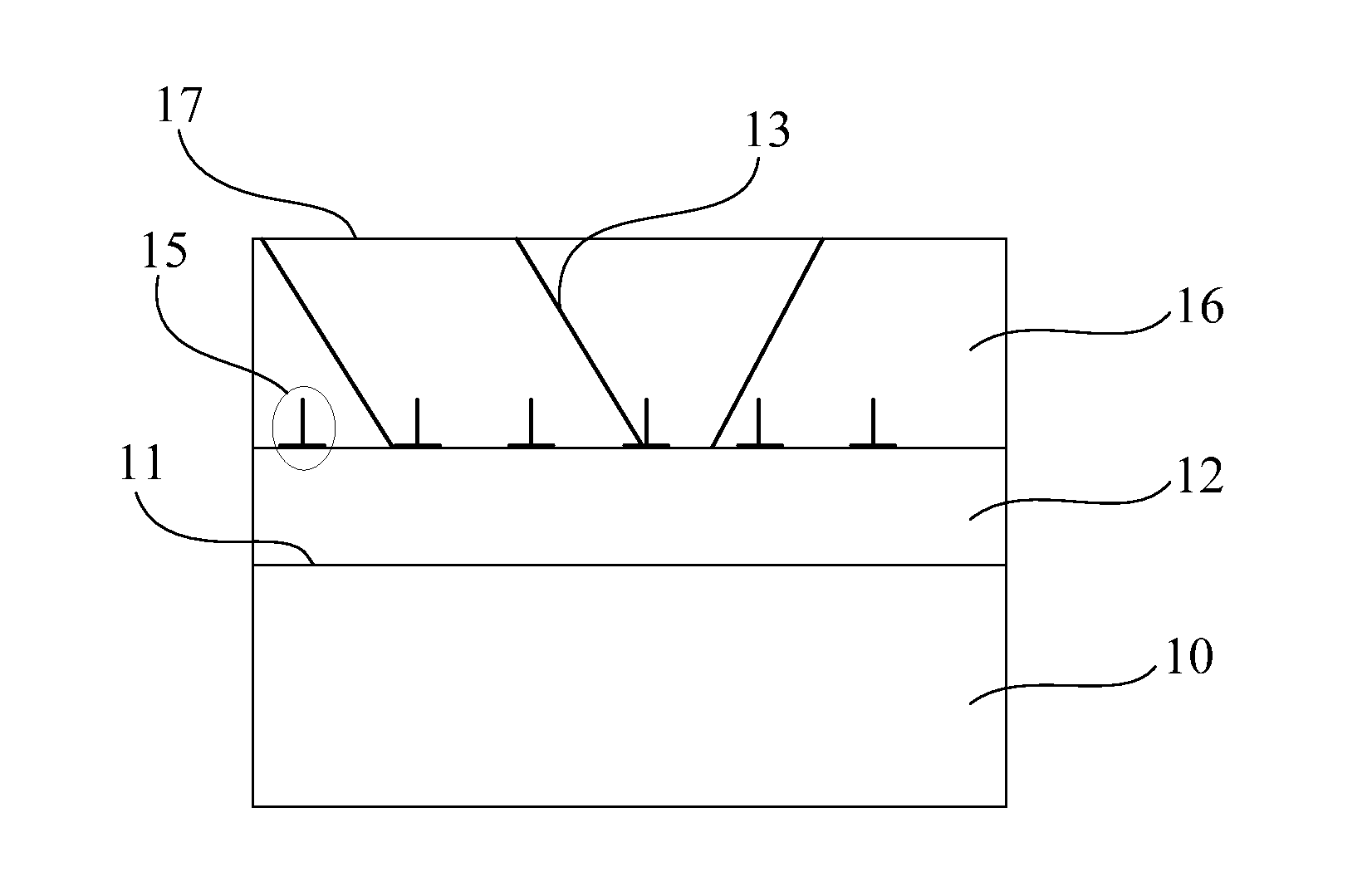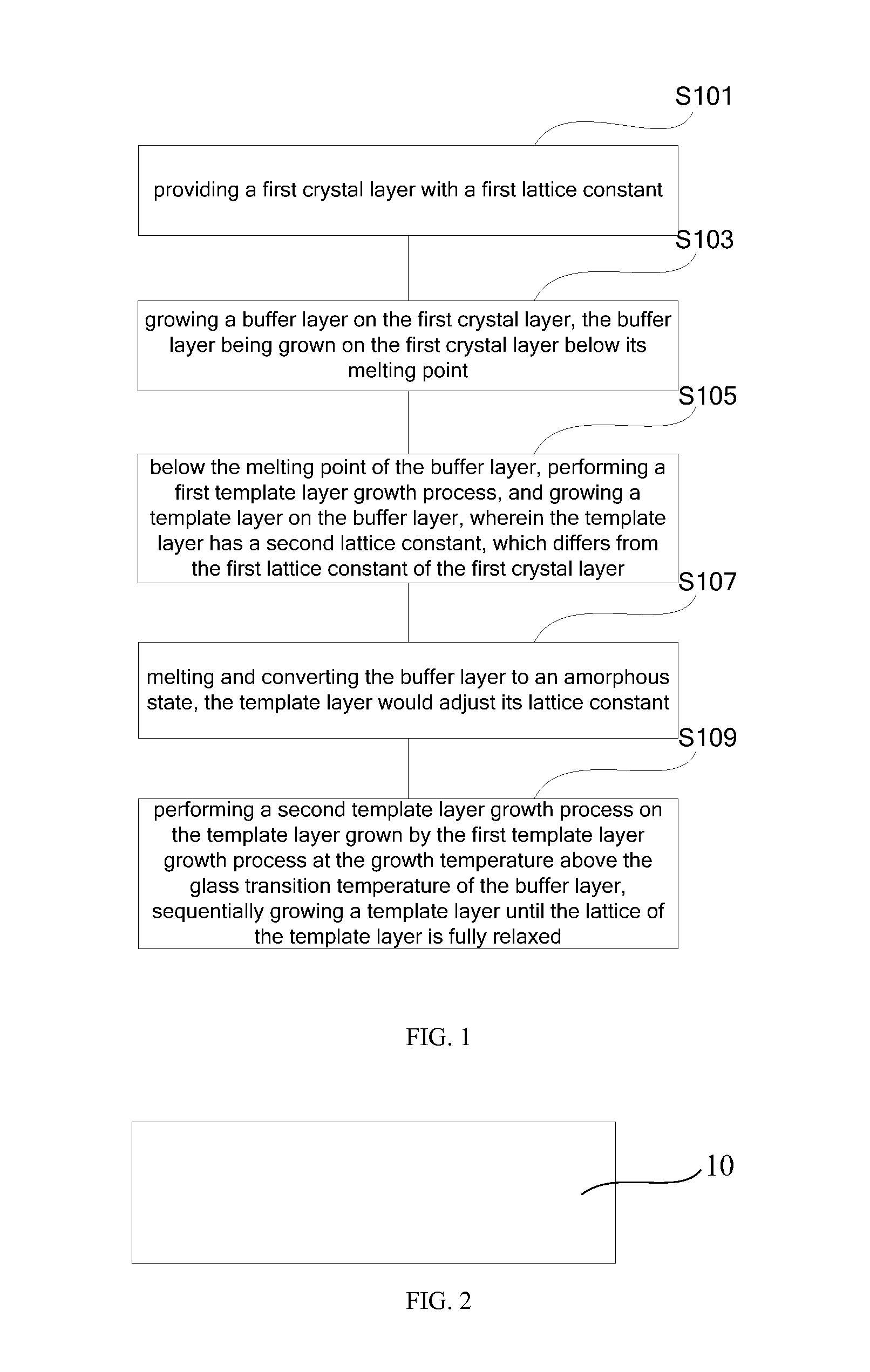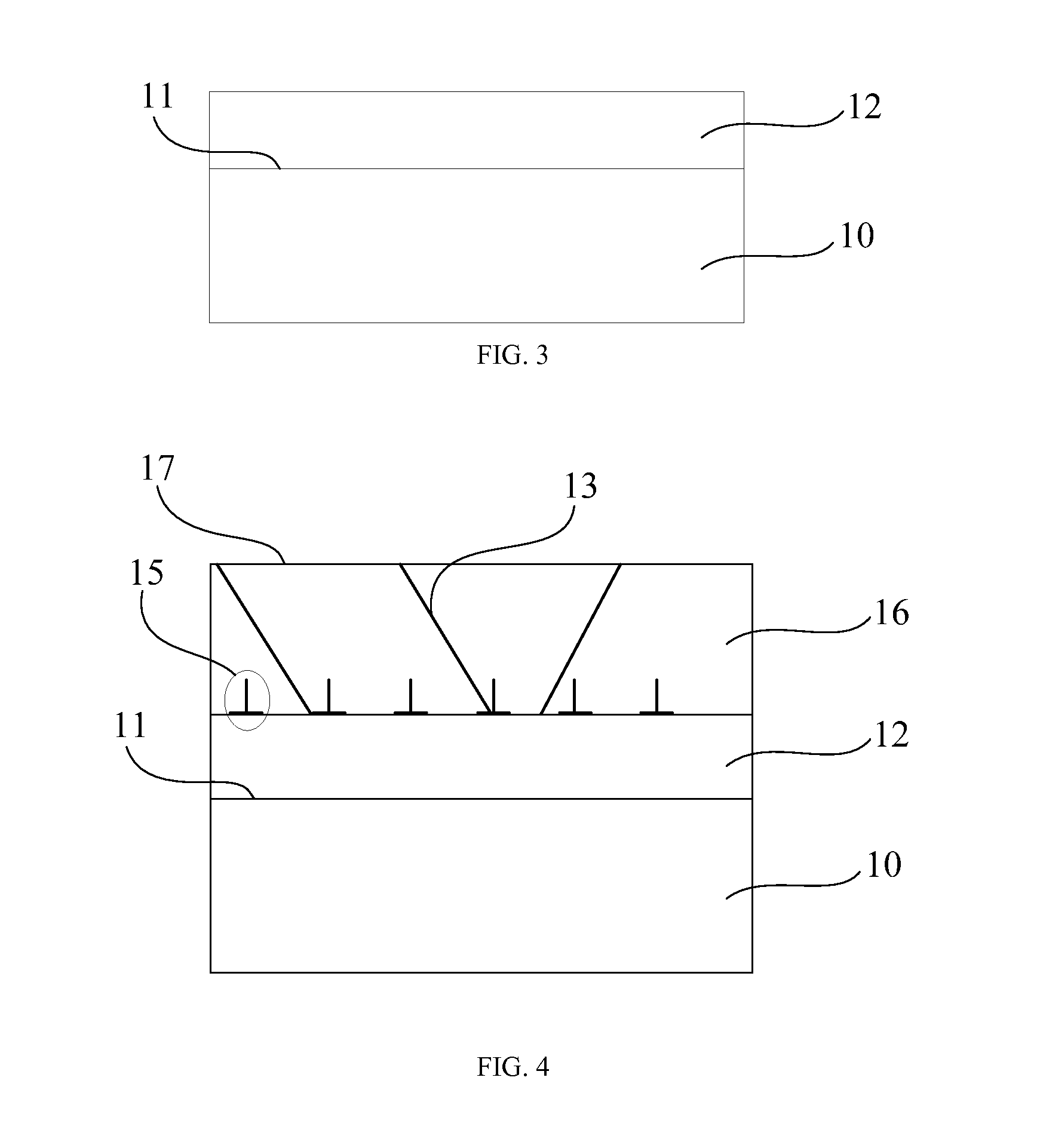Monolithic integrated lattice mismatched crystal template and preparation method thereof
- Summary
- Abstract
- Description
- Claims
- Application Information
AI Technical Summary
Benefits of technology
Problems solved by technology
Method used
Image
Examples
first embodiment
[0041]FIG. 1 is a flow diagram of the first embodiment of the preparation method for a lattice mismatched crystal template of the present invention. As shown in FIG. 1, the preparation method includes the following steps:
[0042]Step S101, providing a first crystal layer with a first lattice constant;
[0043]Step S103, growing a buffer layer on the first crystal layer, the buffer layer being grown on the first crystal layer at a temperature below the melting point of the buffer layer;
[0044]Step S105, below the melting point of the buffer layer, performing a first template layer growth process, and growing a template layer on the buffer layer, wherein the template layer has a second lattice constant, which differs from the first lattice constant of the first crystal layer;
[0045]Step S107, melting and converting the buffer layer to an amorphous state, the template layer would adjust its lattice constant.
[0046]Step S109, performing a second template layer growth process on the template lay...
second embodiment
[0063]FIG. 7 is a flow diagram of the second embodiment of the preparation method for a lattice mismatched crystal template of the present invention. It should be particularly stated that, since some process steps in the second embodiment is the same or similar with that in the first embodiment, the description in the second embodiment would focus on the part distinguished from that in the first embodiment.
[0064]As shown in FIG. 7, the preparation method includes the following steps:
[0065]Step S201, providing a first crystal layer with a first lattice constant;
[0066]Step S203, growing a buffer layer on the first crystal layer, the buffer layer being grown on the first crystal layer at a temperature below its melting point;
[0067]Step S205, below the melting point of the buffer layer, growing a second crystal layer on the buffer layer;
[0068]Step S207, below the melting point of the buffer layer, performing a first template layer growth process, and growing a template layer on the seco...
embodiment 1
In0.3Ga0.7As Template on a GaAs Substrate
[0094]Obviously, ternary In0.3Ga0.7As template is applicable for the design of 1.55 μm InGaAs / InAlAs tele-communication lasers with optimal conduction band mismatch and high thermal stability. Since unstrained bulk material of In0.3Ga0.7As has a band gap of 1 eV, it is suitable to be used as one of the junctions to form a multi junction solar cell with high efficiency.
[0095]According to the invention, the steps for growing In0.3Ga0.7As by molecular beam epitaxy (MBE) technique are followed:
[0096]A GaAs buffer layer is grown on a GaAs substrate to smooth the surface, at the growth temperature of 580° C.
[0097]Through interfacial misfit dislocation array (IMF) method, AlSb or GaSb with a thickness of 0.5 micron (μm) is grown at the growth temperature of 500° C. to 520° C. By forming misfit dislocation array at the interface, the IMF method may achieve in effective strain relaxation, and ensure a low threading dislocation density (optimum value l...
PUM
| Property | Measurement | Unit |
|---|---|---|
| Temperature | aaaaa | aaaaa |
| Lattice constant | aaaaa | aaaaa |
| Thickness | aaaaa | aaaaa |
Abstract
Description
Claims
Application Information
 Login to View More
Login to View More - R&D
- Intellectual Property
- Life Sciences
- Materials
- Tech Scout
- Unparalleled Data Quality
- Higher Quality Content
- 60% Fewer Hallucinations
Browse by: Latest US Patents, China's latest patents, Technical Efficacy Thesaurus, Application Domain, Technology Topic, Popular Technical Reports.
© 2025 PatSnap. All rights reserved.Legal|Privacy policy|Modern Slavery Act Transparency Statement|Sitemap|About US| Contact US: help@patsnap.com



